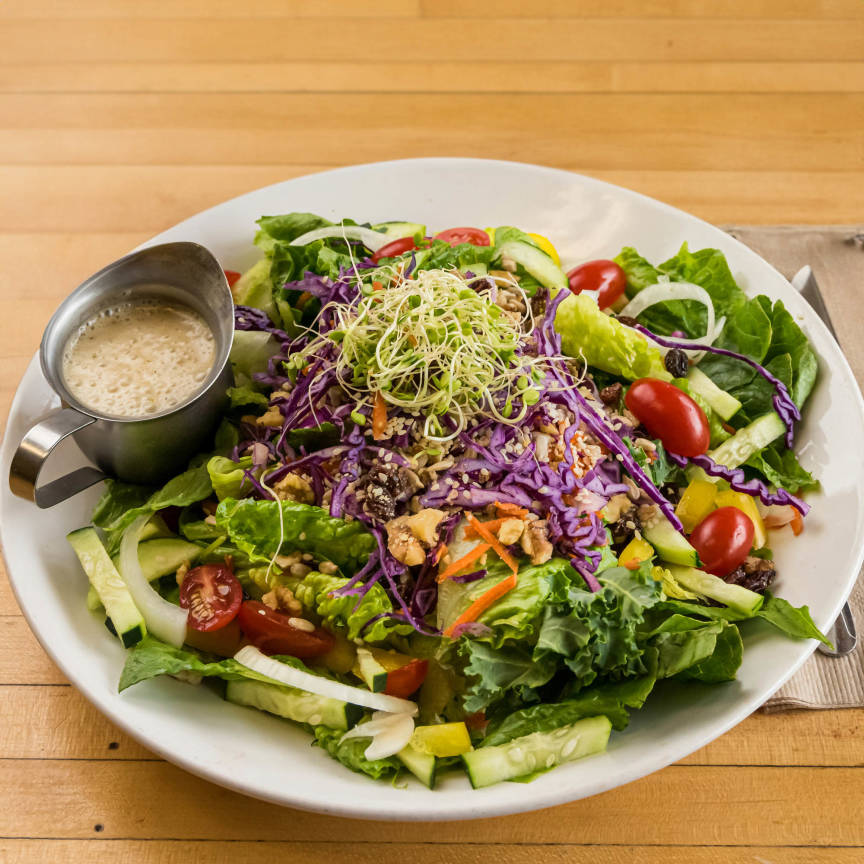Our Mission
At Portia’s Cafe, we believe good food is the foundation of good health–physical, mental, and spiritual. That’s why we strive to provide the most delicious and satisfying foods. We do this by using the freshest, purest, healthiest ingredients, and preparing the food with care and love. Portia’s Café’s principles include sourcing food that is...
Vegan: We use no animal products in the production of our foods
Gluten-free: We only choose to use ingredients that are naturally gluten-free
Organic: We source organic and chem-free products and never use any dirty dozen ingredients
GMO-free: We source our ingredients only from non-genetically engineered organisms
Local: We support our community of farmers by buying local whenever possible
Made with Clean Water: We filter our water to remove fluoride, chlorine, VOCs and contaminants
Order online
Gallery
Reviews
Review by - Yelp
Sally K:
I love this place! Portia makes everything with love and it shows. The food is delicious and the service is above and beyond! If you love vegan or if you have never tried it, this is the place to go in Columbus. You won't be sorry!
Review by - Google
John S:
Wonderful eclectic restaurant for vegan and vegetarian. We had our 32nd anniversary dinner for eight people and had a fantastic time! The staff is friendly and helpful, our waitress was like a family member by the end of our meal.
Review by - Yelp
Lindsey S:
This place is everything I love! If you have food allergies or sensitivities- this place is for you!! All organic and local- with unique options. PLUS they serve breakfast ALL day!!! Who can ask for anything more!? Plus- it's so super cute and they have items to buy. In addition, they have a natural grocery store in walking distance- going there next!
Review by - Google
Rachel E:
100% love Portia's. I can eat delicious plant based meals and my non -vegan friends are blown away with the options and how amazing everything tastes. The Super Power Wrap with tomatoes and pickles is my go-to, but I've tried almost everything and always have a wonderful experience. Do not miss the cheesecake. You'll thank me.
Review by - Google
Jessica Henry:
This is my favorite restaurant of all the restaurants that I've ever been to. I've never had a bad experience, the food is always delicious, and the atmosphere is so cozy and uplifting. Also, I always feel super healthy and full of energy after eating there. I think my favorite dishes right now are the Super Cindy Wrap and the Pad Thai with Kelp Noodles. Their berry cheesecake is also amazing. I'm so happy this restaurant exists. :)
Location
4428 Indianola Ave
Columbus, OH
43214
Hours
REGULAR HOURS
Mon - Sat
8:00 am to 9:00 pm
Sun
8:00 am to 3:00 pm



